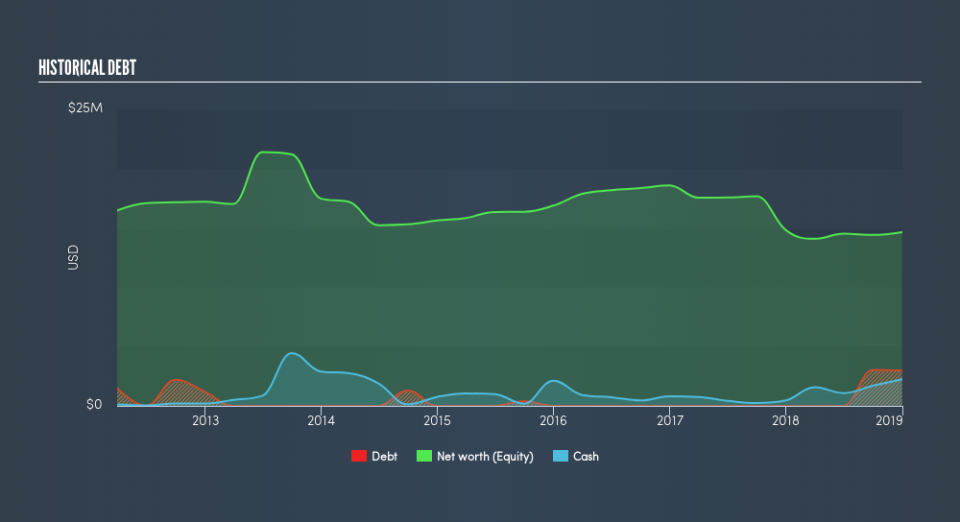Is Koss Corporation’s (NASDAQ:KOSS) Balance Sheet Strong Enough To Weather A Storm?

Want to participate in a short research study? Help shape the future of investing tools and receive a $20 prize!
While small-cap stocks, such as Koss Corporation (NASDAQ:KOSS) with its market cap of US$14m, are popular for their explosive growth, investors should also be aware of their balance sheet to judge whether the company can survive a downturn. Consumer Durables businesses operating in the environment facing headwinds from current disruption, in particular ones that run negative earnings, are more likely to be higher risk. So, understanding the company’s financial health becomes crucial. Here are a few basic checks that are good enough to have a broad overview of the company’s financial strength. However, since I only look at basic financial figures, I suggest you dig deeper yourself into KOSS here.
How does KOSS’s operating cash flow stack up against its debt?
Over the past year, KOSS has borrowed debt capital of around US$3.0m accounting for long term debt. With this ramp up in debt, KOSS’s cash and short-term investments stands at US$2.2m for investing into the business. Additionally, KOSS has produced US$2.0m in operating cash flow over the same time period, leading to an operating cash to total debt ratio of 67%, signalling that KOSS’s current level of operating cash is high enough to cover debt. This ratio can also be a sign of operational efficiency for unprofitable companies since metrics such as return on asset (ROA) requires positive earnings. In KOSS’s case, it is able to generate 0.67x cash from its debt capital.
Does KOSS’s liquid assets cover its short-term commitments?
With current liabilities at US$3.3m, it appears that the company has maintained a safe level of current assets to meet its obligations, with the current ratio last standing at 3.85x. Having said that, many consider a ratio above 3x to be high.
Does KOSS face the risk of succumbing to its debt-load?
KOSS’s level of debt is appropriate relative to its total equity, at 20%. KOSS is not taking on too much debt commitment, which can be restrictive and risky for equity-holders. Risk around debt is very low for KOSS, and the company also has the ability and headroom to increase debt if needed going forward.
Next Steps:
KOSS’s high cash coverage and appropriate debt levels indicate its ability to utilise its borrowings efficiently in order to generate ample cash flow. Furthermore, the company exhibits proper management of current assets and upcoming liabilities. Keep in mind I haven’t considered other factors such as how KOSS has been performing in the past. I recommend you continue to research Koss to get a better picture of the stock by looking at:
Valuation: What is KOSS worth today? Is the stock undervalued, even when its growth outlook is factored into its intrinsic value? The intrinsic value infographic in our free research report helps visualize whether KOSS is currently mispriced by the market.
Historical Performance: What has KOSS’s returns been like over the past? Go into more detail in the past track record analysis and take a look at the free visual representations of our analysis for more clarity.
Other High-Performing Stocks: Are there other stocks that provide better prospects with proven track records? Explore our free list of these great stocks here.
We aim to bring you long-term focused research analysis driven by fundamental data. Note that our analysis may not factor in the latest price-sensitive company announcements or qualitative material.
If you spot an error that warrants correction, please contact the editor at editorial-team@simplywallst.com. This article by Simply Wall St is general in nature. It does not constitute a recommendation to buy or sell any stock, and does not take account of your objectives, or your financial situation. Simply Wall St has no position in the stocks mentioned. Thank you for reading.

